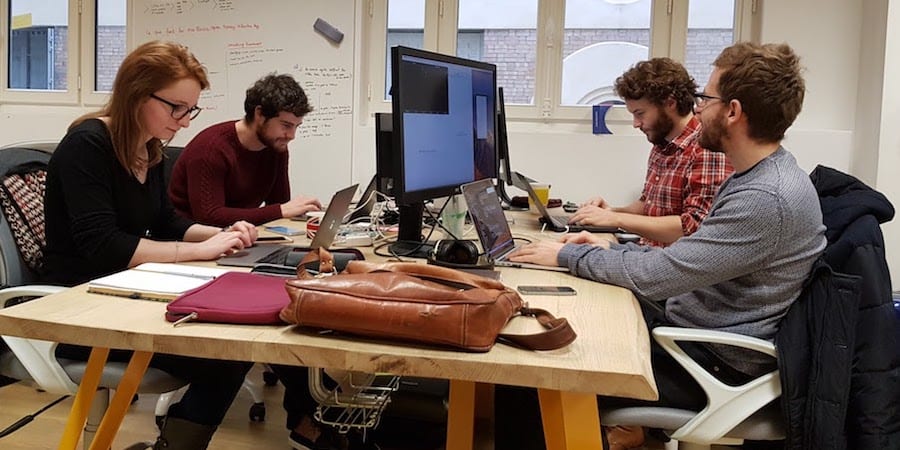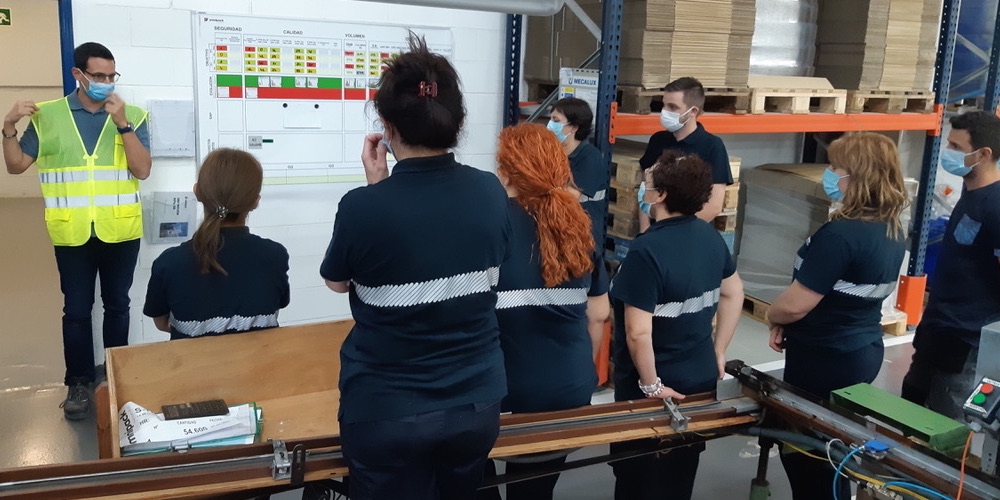
Learning A3 thinking to become a better doctor
FEATURE – A student in a medical school recently completed a rotation based on A3 thinking. She tells us what learning to use this problem-solving method has brought her.
Words: Laura O’Donohue, medical student, Michigan Medical School
In January, as part of my third year at Michigan Medical School, I took part in a one-month rotation focused on A3 thinking (Dr Billi recently wrote about it here on Planet Lean). I saw the initiative as an opportunity to learn how to think as a leader, but also how to identify problems I might have not otherwise seen or known how to think about proactively.
I had had exposure to the A3 model in the past and saw it as a framework to help organize my thinking. I also found it compatible with the scientific thinking we rely upon as doctors. With every patient, there is the obvious problem (say, high blood pressure) but also the underlying causes of that problem, which must be investigated and addressed. With this is mind, it is hard not to see the similarities between a patient history and A3 thinking.
The rotation began with gemba walks: I would go with Dr. Billi to various departments in the hospital during their huddles to see how different teams were already using lean in their daily work. Dr. Billi and his team scheduled very interesting meetings for me to attend to learn how the hospital runs, from quality improvement meetings to one-on-one meetings with people high up in the hospital administration. It was fascinating to see the process and how dedicated everyone was to making positive change. I also did a two-day lean course as part of the rotation, which helped jump start my own A3.
On the first week of the rotation, I was tasked with identifying a problem that jumped out at me. I decided to focus my A3 on patients with end-stage liver disease in the inpatient setting and whether there was a delay in appropriate palliative care consults. End-stage liver disease has a poor prognosis, with a life expectancy of on average two years without transplant. However, some patients don’t make it on the list and many who do don’t receive a transplant in the end. This creates an opportunity for palliative care – allowing patients to discuss their values and goals around healthcare without the prognostic constrictions of hospice care.
I shared my A3 with healthcare providers, patients, and a variety of other people. Everyone is interested in how to have conversations in the face of serious illness, because we all will inevitably experience it, with patients or with loved ones. What I discovered is that right now palliative care is very well designed for oncology patients, but we don’t have established best practices for its role in end-stage chronic diseases. What I hope to do going forward is create case studies on palliative care in chronic diseases to show primary teams what to expect from a palliative care consult, and the value it might bring.
As I look back at my rotation, I think that the biggest benefit of the A3 model is that it encouraged me to go see: shadowing on rounds allowed me to talk to people at all levels, something I wouldn’t have done as thoroughly and extensively without the guidance of the A3 model. Humble enquiry places a huge emphasis on ensuring you have the right question, and that would have been cut short without lean informing my thinking.
Speaking of asking the right questions, it was great to meet with Dr. Billi every week to go over the A3. His questions (asked without implying what he thought I should do) guided me as I changed and refined the A3 and progressed in my investigation of the problem. The coaching process helped me to think outside of my traditional approach and to really dig deep into the problem. Here’s where we can draw another parallel between A3 thinking and “medical thinking”: the process of humble inquiry, which A3 thinking teaches us, is crucial for our relationship with patients. So much of being a doctor these days is addressing lifestyle issues and trying to understand why people move, eat, sleep, take their medication, and so on. There is no doubt that developing my humble enquiry skills will make me a better care provider.
The benefits of A3 thinking don’t finish there. Knowing there is a process to address problems empowers you, and lean thinking has given me the tools to address this and future problems. In fact, one of the best things about having this course while in medical school is that I might have assumed I couldn’t tackle a problem like the one I chose for my A3. There is value in showing medical students who come to healthcare with fresh eyes, that they have the ability to identify and tackle big problems starting early in their careers. In my opinion, that’s where the power of this rotation lies.
As a future physician, I have the honor of helping one patient at a time, but I believe it is also my responsibility to improve outcomes for many patients at once through quality improvement. Learning to see and solve problems is a fundamental step in that direction.
THE AUTHOR

Read more


FEATURE - London-based startup Elastera may represent the example of a company aspiring to be lean from the outset rather than trying to fix itself later through a transformation.


BUILDING BRIDGES – In this new series, people from startup studio M33 discuss their relationship with lean thinking and how the methodology helps them in their daily work.


FEATURE - What if it were your staff driving change rather than managers? A focus on improvement at the front line and on people development proved critical to the lean transformation of a Stanford hospital.


CASE STUDY – This packaging company in Catalonia has been able to cleverly balance the resolution of urgent problems and the advancement of the lean transformation. But what to do when the burning platform is no more?

